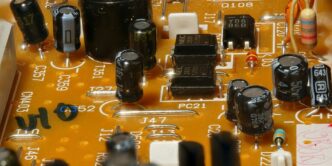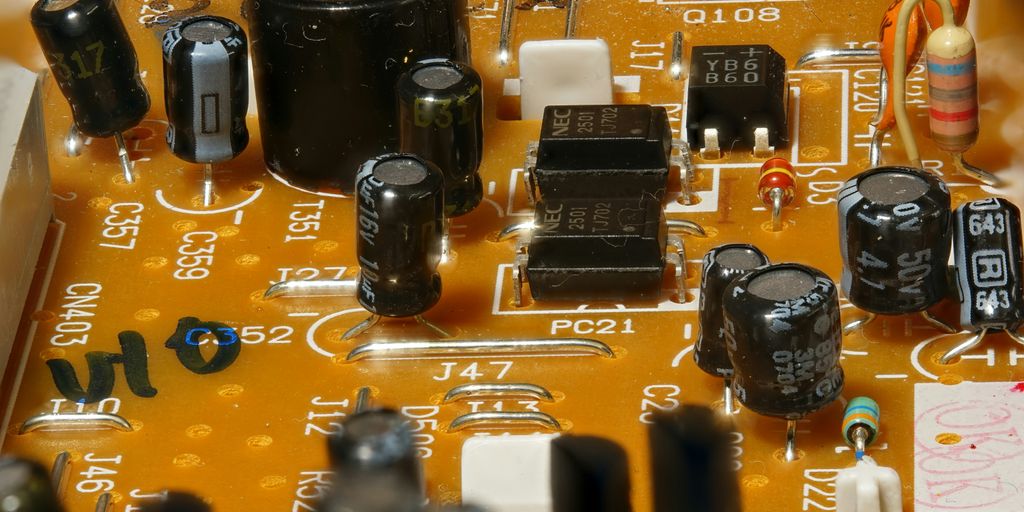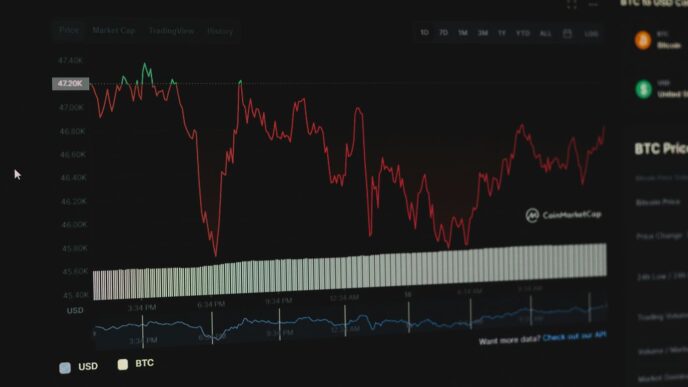So, everyone’s talking about Intel 18A and what it means for computers. It’s a big deal because Intel wants to get back on top in making chips. This 18A technology is supposed to be super advanced, like a big jump forward. But there’s also been some chatter about how well they can actually make these chips, like, if a lot of them will work right. We’re going to break down what all this means, from the cool new tech inside to the rumors about how hard it is to make them, and what it could mean for your next computer or even the big data centers out there. It’s all about Intel 18A transistor density and how it changes things.
Key Takeaways
- Intel 18A is a big part of Intel’s plan to make better chips again, aiming for a 2025 production start.
- New tech like RibbonFET and PowerVia are key to 18A’s design, helping make chips smaller and more efficient.
- There were rumors about low production success rates for Intel 18A, but Intel says things are looking up.
- Intel is making good progress with 18A, with new chips like Panther Lake and Clearwater Forest already working.
- Intel 18A faces tough competition from other chipmakers, but its unique features might give it an edge.
The Genesis and Promise of Intel 18A
Reclaiming Semiconductor Leadership
For a while there, it felt like Intel was losing its edge. The whole industry was watching to see if they could bounce back. The development of Intel 18A is a big part of their plan to do just that. It’s not just about making chips; it’s about proving they can still lead the way in semiconductor manufacturing. It’s a statement, really.
The "5 Nodes in 4 Years" Initiative
So, Intel had this ambitious plan: "5 Nodes in 4 Years." Basically, they wanted to jump ahead in chip tech, and fast. Intel 18A is the last step in that plan, following Intel 7, Intel 4, Intel 3, and Intel 20A. It’s supposed to be a big deal because it uses new tech like RibbonFET and PowerVia. It’s like they’re saying, "We’re not just catching up; we’re innovating."
Strategic Vision for Next-Gen Computing
Intel 18A isn’t just about making faster processors. It’s about enabling the next generation of computing. Think AI, data centers, and all sorts of high-performance applications. The goal is to create chips that are more powerful and efficient, opening up new possibilities for what computers can do. It’s a long-term play, positioning Intel to be a key player in the future of technology. They’re not just thinking about today’s problems; they’re looking ahead to what’s next.
Breakthrough Technologies Driving Intel 18A Transistor Density
Okay, so Intel’s 18A is a big deal, right? It’s not just another chip; it’s supposed to be a game-changer. What’s making all the buzz? Well, it boils down to two main things: how the transistors are built and how power gets to them. Let’s break it down.
RibbonFET: Redefining Transistor Design
So, the old way of making transistors was with FinFETs. They’re okay, but Intel’s moving to something called RibbonFET, which is their name for Gate-All-Around (GAA) transistors. Basically, instead of the gate being on just some sides of the channel, it’s now on all sides. Think of it like surrounding a pipe with your hand instead of just touching it on one side – you get way better control. This means less leakage and better performance. It’s a pretty big shift in how transistors are made. This design enhances control over current flow, boosting performance while reducing leakage. It’s a key element in achieving the density and efficiency gains promised by Intel 18A.
PowerVia: Revolutionizing Power Delivery
Now, this is where things get interesting. Imagine all the power lines that feed electricity to the chip. Usually, they’re on the same side as the signal lines, which can get crowded. PowerVia flips that around. It puts the power lines on the back of the wafer. It’s like moving the plumbing in your house behind the walls – it frees up space and makes everything cleaner. Intel says this can give a 15% performance per watt boost and a 30% density increase compared to their older tech. That’s huge! Plus, it helps with signal integrity, which is always a good thing. You can think of Intel Rapid Storage Technology (RST) as a similar optimization, but for storage devices.
Performance and Density Gains
So, what does all this mean in the real world? Well, Intel is aiming for some serious improvements. We’re talking about chips that can do more with less power, which is great for everything from your phone to massive data centers. The combination of RibbonFET and PowerVia is what’s supposed to make it all happen. It’s not just about making things smaller; it’s about making them better. Here’s a quick look at the expected gains:
- Increased transistor density: Allows for more complex designs and functionality.
- Improved power efficiency: Reduces energy consumption and heat generation.
- Enhanced performance: Enables faster processing speeds and responsiveness.
Of course, all of this is on paper right now. The big question is whether Intel can actually pull it off. But if they can, 18A could really shake things up. The Intel 18A Process is a big step forward.
Intel 18A Yields: Unpacking the Controversy
Okay, so everyone’s been talking about Intel 18A yields. It’s like the hot topic at every tech conference and online forum. Basically, yields are super important because they tell you how many good chips you get from a silicon wafer. Low yields? That means more waste and higher costs. And in the chip world, cost is king.
Understanding Yields in Chipmaking
Think of it like baking cookies. You throw a bunch of dough onto a sheet, but not every cookie comes out perfectly. Some are burnt, some are misshapen, and some are just right. Chipmaking is similar, but way more complex. You start with a silicon wafer and try to make as many functional chips as possible. The percentage of those functional chips is the yield. Higher yields mean more profit, lower costs, and happier customers.
Several things affect yields:
- Defect Density: How many imperfections are on the wafer. Fewer defects, better yields.
- Die Size: Bigger chips are harder to make perfectly. More area, more chances for something to go wrong.
- Process Maturity: New processes are always rough around the edges. As you refine the process, yields improve.
The 10% Yield Rumor vs. Reality
The drama started when a report came out saying Intel 18A yields were only 10%. That’s… not good. If that were true, it would make mass production super expensive and maybe even impossible. The Intel 18A Yields Report sent shockwaves through the industry. People started questioning if Intel could actually pull off their ambitious plans. Then there were rumors that Broadcom tested 18A and bailed because it wasn’t ready for prime time. Ouch.
But Intel pushed back, saying the reports were inaccurate. They claimed yields were much better than 10%, though they didn’t give specific numbers. It’s all very hush-hush. The truth is probably somewhere in the middle. New nodes always have lower yields at first. It takes time to work out the kinks and get things running smoothly. For comparison, older processes like Intel 7 have yields around 80-90%. That’s after years of tweaking and optimization.
Impact on Cost Efficiency and Scalability
Low yields hit you in the wallet. If you’re only getting a small percentage of usable chips, you have to make a lot more wafers to get the same number of working products. That increases costs for materials, manufacturing, and testing. It also affects scalability. If you can’t produce enough chips, you can’t meet demand. And that’s a problem when you’re trying to power the next generation of AI and high-performance computing. A water-cooled gaming laptop needs the best chips available to elevate the gaming experience.
Here’s a simplified look at how yields affect cost:
| Yield | Wafers Needed (for 1000 chips) | Cost per Chip (estimated) |
|---|---|---|
| 10% | 10,000 | $$$ |
| 50% | 2,000 | $$ |
| 90% | 1,111 | $ |
As you can see, even a small improvement in yield can have a big impact on cost. So, Intel’s focus on improving defect density and process maturity is super important for the long-term success of 18A.
Key Milestones and Production Timeline for Intel 18A
Functional Panther Lake and Clearwater Forest Chips
Okay, so Intel’s been pretty busy. They’ve hit some big milestones with their 18A process. Remember all that talk about Panther Lake and Clearwater Forest chips? Well, they’re not just on paper anymore. Intel announced last September that they successfully booted up these chips and got them running operating systems. That’s a huge deal because it means they’ve moved past the theoretical stage and are actually making functional hardware. It’s like seeing a prototype car actually drive – a sign that things are moving in the right direction.
Defect Density Improvements
Defect density is a big deal in chip manufacturing. Basically, it’s a measure of how many imperfections there are on a chip. The lower the defect density, the better the yield (more good chips coming off the line). Intel’s been working hard to get their defect density down, and they’re reportedly trending below 0.4. That’s a pretty solid number, and it shows they’re making progress in refining their manufacturing process. It’s like baking a cake – you want as few burnt spots as possible, right?
High-Volume Manufacturing Targets
So, when can we expect to see these 18A chips in our computers and servers? Intel is aiming for high-volume manufacturing by late 2025, with a bigger ramp-up expected in 2026. That’s the timeline they’re shooting for, anyway. Of course, things can always change in the world of chip manufacturing, but that’s the current plan. It’s like planting a tree – you know when you want to harvest the fruit, but you also know that weather and other factors can affect the timeline. Customer tape-outs are scheduled for mid-2025, which should give us a clearer picture of how things are progressing. This will be a key indicator of market readiness.
Intel 18A’s Competitive Landscape
Benchmarking Against TSMC’s N3E and N2 Nodes
Okay, so Intel’s 18A isn’t just running solo; it’s in a race. The big one to watch is TSMC. Their N3E node, which is a 3nm-class tech, is supposedly hitting yields of 84-90%. That’s pretty solid and helps them dominate in areas like mobile chips and high-performance computing. TSMC is also working on their N2 (2nm) node, so the pressure is on Intel to show that 18A can compete, especially if they want to be a serious player in the foundry game. It’s all about who can make the most chips that actually work, and TSMC is currently ahead. Let’s see how TSMC’s N2 fares in the market.
Samsung’s 3nm GAA Challenges
Samsung is also in the mix, but they’ve had a tougher time. Their 3nm GAA process has been facing yield issues, reportedly below 20%. This has caused delays in getting things into mass production. It just goes to show that even the most advanced nodes can have problems getting off the ground. It’s a good reminder that these things are hard, and everyone struggles. Samsung’s struggles highlight the complexities of advanced node manufacturing.
Differentiating Factors: RibbonFET and PowerVia
Intel is trying to set itself apart with its RibbonFET and PowerVia technologies. RibbonFET (their version of Gate-All-Around transistors) should give better performance, and PowerVia is supposed to improve power efficiency. The idea is that this combo will give Intel an edge, but it all depends on whether they can get the yields up to a competitive level. If they can’t make enough good chips, then the fancy tech won’t matter much. It’s a bit of a gamble, but if it pays off, Intel could really shake things up. The success of PowerVia technologies is crucial for Intel’s competitive edge.
Applications and Future Impact of Intel 18A Transistor Density
Powering AI Workloads and Client Processors
Okay, so Intel 18A isn’t just some techy thing that only engineers care about. It’s actually going to change the stuff we use every day. Think about AI – all those crazy AI workloads need serious processing power. 18A is designed to deliver exactly that. We’re talking faster response times for AI assistants, better image recognition, and all sorts of AI-powered features that will become way more common. And it’s not just servers; your next laptop or desktop could be running on an 18A chip, making everything snappier and more efficient. The increased transistor density directly translates to more powerful and efficient client processors.
Server CPUs and Data Center Innovation
Data centers are the backbone of the internet, and they’re always hungry for more performance. Intel 18A is set to shake things up here too. The new server CPUs built on this technology will be able to handle way more data and complex calculations, which is a big deal for things like cloud computing, scientific research, and big data analytics. Plus, the improved power efficiency means data centers can pack more computing power into the same space without overheating or using a ton more electricity. It’s a win-win. Here are some potential improvements:
- Increased processing speed
- Reduced energy consumption
- Higher density of servers per rack
Foundry Ambitions and External Customers
Intel isn’t just making chips for themselves anymore. They’re serious about becoming a major player in the foundry business, which means making chips for other companies too. 18A is a key part of this plan. By offering cutting-edge manufacturing capabilities, Intel hopes to attract customers who need the most advanced silicon for their own products, whether it’s for smartphones, self-driving cars, or specialized AI hardware. It’s a big move that could reshape the entire semiconductor industry. Intel’s foundry ambitions are pretty high, and they’re betting that 18A will help them get there. They’re aiming to provide:
- Advanced manufacturing processes
- Competitive pricing
- Reliable supply chains
Navigating Challenges and Optimism for Intel 18A
Refining Defect Density and Scaling Production
Okay, so Intel’s 18A isn’t exactly a walk in the park. There are definitely some hurdles to clear, especially when it comes to making sure everything is working correctly and producing chips in large quantities. Defect density is a big one – basically, how many tiny flaws are popping up on the chips. The lower, the better, obviously. Intel’s been working hard to get that number down, and they’ve made progress, but there’s still work to do. Then there’s the whole scaling thing. It’s one thing to make a few good chips in a lab, but it’s another thing entirely to churn them out by the millions. That requires a whole different level of precision and control. Think of it like baking cookies: one batch is easy, but baking thousands for a school bake sale? That’s a challenge.
Customer Tape-Outs and Market Readiness
Customer tape-outs are a huge deal. It’s when companies like Broadcom actually design chips using Intel’s 18A process. These tape-outs will give us a much clearer picture of how well 18A is performing in real-world applications. If customers are happy with the results, that’s a major vote of confidence. If they’re not, well, that’s a problem. The industry is watching closely to see how these tape-outs go. It’s like waiting for the reviews to come in after a movie premiere. If the reviews are good, everyone wants to see it. If they’re bad, not so much. Market readiness is another key factor. It’s not enough to just have a great technology; you also need to be able to deliver it to customers when they need it. That means having the manufacturing capacity, the supply chain, and the support infrastructure in place. It’s a complex puzzle, but Intel needs to solve it if they want 18A to be a success. industrial storage tents are also facing similar challenges in scaling and market readiness.
Reclaiming the Silicon Crown
Intel wants to be on top again, plain and simple. They were the kings of silicon for a long time, but they’ve lost some ground in recent years. 18A is their big bet to get back on top. It’s not going to be easy, though. TSMC and Samsung are formidable competitors, and they’re not standing still. But Intel has a few things going for them. Their RibbonFET and PowerVia technologies are promising, and they have a lot of experience in chip manufacturing. Plus, they’re hungry. They want to prove that they can still innovate and compete at the highest level. Whether they can actually pull it off remains to be seen, but you can’t count them out. The next year or two will be critical. By 2026, we should have a much better idea of whether Intel’s 18A gamble has paid off. For now, there’s cautious optimism, but plenty of challenges still lie ahead.
Conclusion
So, what does all this mean for Intel 18A? Well, it looks like Intel is really trying to get back in the game. They’ve had some tough times, but 18A, with its new RibbonFET and PowerVia stuff, seems like a real step forward. It’s supposed to make chips way better, especially for all the AI things everyone is talking about. Sure, there were some rumors about bad yields, like only 10% of the chips working, which sounds pretty scary. But it seems like those rumors were maybe a bit overblown, probably just about some really big test chips. Intel says they’re hitting their goals, and they’ve even got working chips like Panther Lake and Clearwater Forest. They’re also using this chiplet idea, which helps if some parts don’t work perfectly. It’s not going to be easy, and they still have to make sure they can make tons of these chips without problems. Plus, they need to get other companies to actually buy them. But for now, it looks like Intel is on the right track. They’re definitely fighting to get their top spot back in the chip world.
Frequently Asked Questions
What exactly is Intel 18A?
Intel 18A is a new way to make computer chips. It’s like building tiny cities on a silicon wafer, and 18A means the roads and buildings are super, super small. This makes chips faster and use less power. It’s a big deal because Intel wants to be the best at making these advanced chips again.
What makes Intel 18A different from older chip-making methods?
Intel 18A is special because it uses two new tricks: RibbonFET and PowerVia. RibbonFET is like wrapping a tiny wire all the way around a transistor to make it work better. PowerVia is like putting the power lines on the back of the chip, which leaves more room on the front for the important parts. These two things together make chips much more powerful and efficient.
Why are ‘yields’ such a big deal for Intel 18A?
Yields are super important! Imagine you’re baking cookies. The ‘yield’ is how many good cookies you get from your batch. For chips, it’s how many working chips you get from one big silicon circle. If the yield is low, it means a lot of chips are broken, which makes them very expensive to make. A rumor said Intel’s 18A yields were very low, but Intel says things are getting much better.
When can we expect to see products made with Intel 18A?
Intel has been working hard to fix any problems. They’ve already made test chips like ‘Panther Lake’ and ‘Clearwater Forest’ that work. They’re aiming to start making these chips in big numbers in 2025, and then even more in 2026. This means we’ll see products using 18A very soon.
How will Intel 18A change the way we use computers?
Intel 18A will make computers much better at handling tough jobs, especially things like Artificial Intelligence (AI) and powerful computer games. It will also help make faster computers for big data centers, which are like the brains of the internet. Plus, Intel wants to make chips for other companies, not just their own.
Who are Intel’s main rivals in making these super-advanced chips?
Intel is competing with other big chip makers like TSMC and Samsung. TSMC has its own advanced chip-making methods. Samsung is also trying new things, but they’ve had some problems. Intel hopes that their special RibbonFET and PowerVia technologies will give them an edge over the others.














